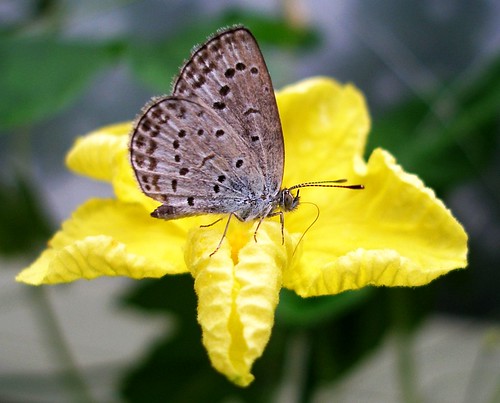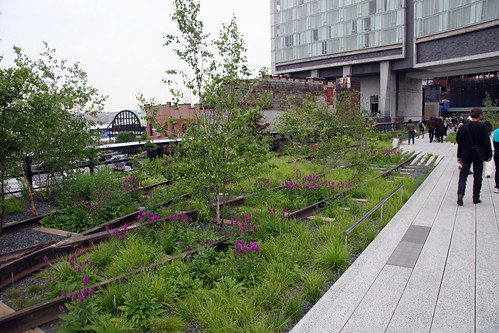Butterfly on a yellow flower by tanakawho
Whenever I see a butterfly, I get so excited, I am like a child. What is the wonder of butterflies that make them so magical? Bear with TheGardenLady as I share a favorite poem or skip to the bottom to read about Manhattan’s newest park.
- “To A Butterfly” (1801)
- I’VE watched you now a full half-hour;
Self-poised upon that yellow flower
And, little Butterfly! indeed
I know not if you sleep or feed.
How motionless!–not frozen seas
More motionless! and then
What joy awaits you, when the breeze
Hath found you out among the trees,
And calls you forth again!
This plot of orchard-ground is ours;
My trees they are, my Sister’s flowers;
Here rest your wings when they are weary;
Here lodge as in a sanctuary!
Come often to us, fear no wrong;
Sit near us on the bough!
We’ll talk of sunshine and of song,
And summer days, when we were young;
Sweet childish days, that were as long
As twenty days are now. -
________________________
STAY near me–do not take thy flight!
A little longer stay in sight!
Much converse do I find in thee,
Historian of my infancy!
Float near me; do not yet depart!
Dead times revive in thee:
Thou bring’st, gay creature as thou art!
A solemn image to my heart,
My father’s family! Oh! pleasant, pleasant were the days,
The time, when, in our childish plays,
My sister Emmeline and I
Together chased the butterfly!
A very hunter did I rush
Upon the prey:–with leaps and springs
I followed on from brake to bush;
But she, God love her, feared to brush
The dust from off its wings.- By William Wordsworth (1770-1850).
_______________________________
Today I saw the second Monarch butterfly this summer. I wasn’t certain the first butterfly I saw yesterday was really a Monarch because it flitted away from me so quickly. Then I spoke to a friend who saw a Monarch flying when she was walking on the High Line in Manhattan a few weeks ago. So I knew that the Monarch butterflies are starting to migrate in my area.
090610 High Line Park 017 by joevare
If you don’t know about the High Line and love walking in gardens then you are in for a treat if you visit Manhattan. It is the newest park. Located on Manhattan’s West Side, it runs from Gansevoort Street in the Meatpacking District to West 34th Street, between 10th & 11th Avenues. Section 1 of the High Line opened to the public on June 9, 2009 and the rest just opened June 8, 2011.The park is filled with native plants. Check out their website where you can get a list of the native plants they planted and which plants are in bloom each month. See here.












